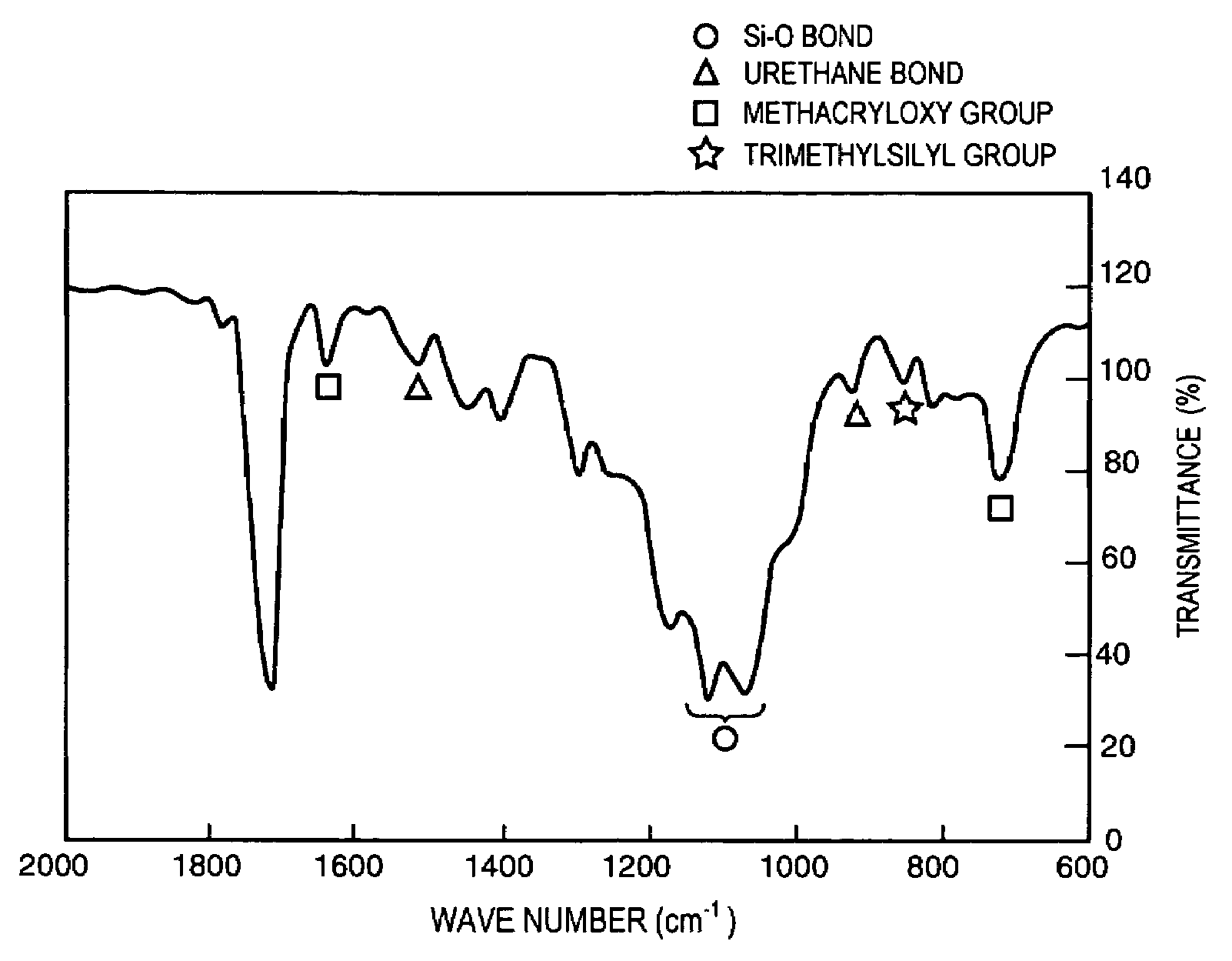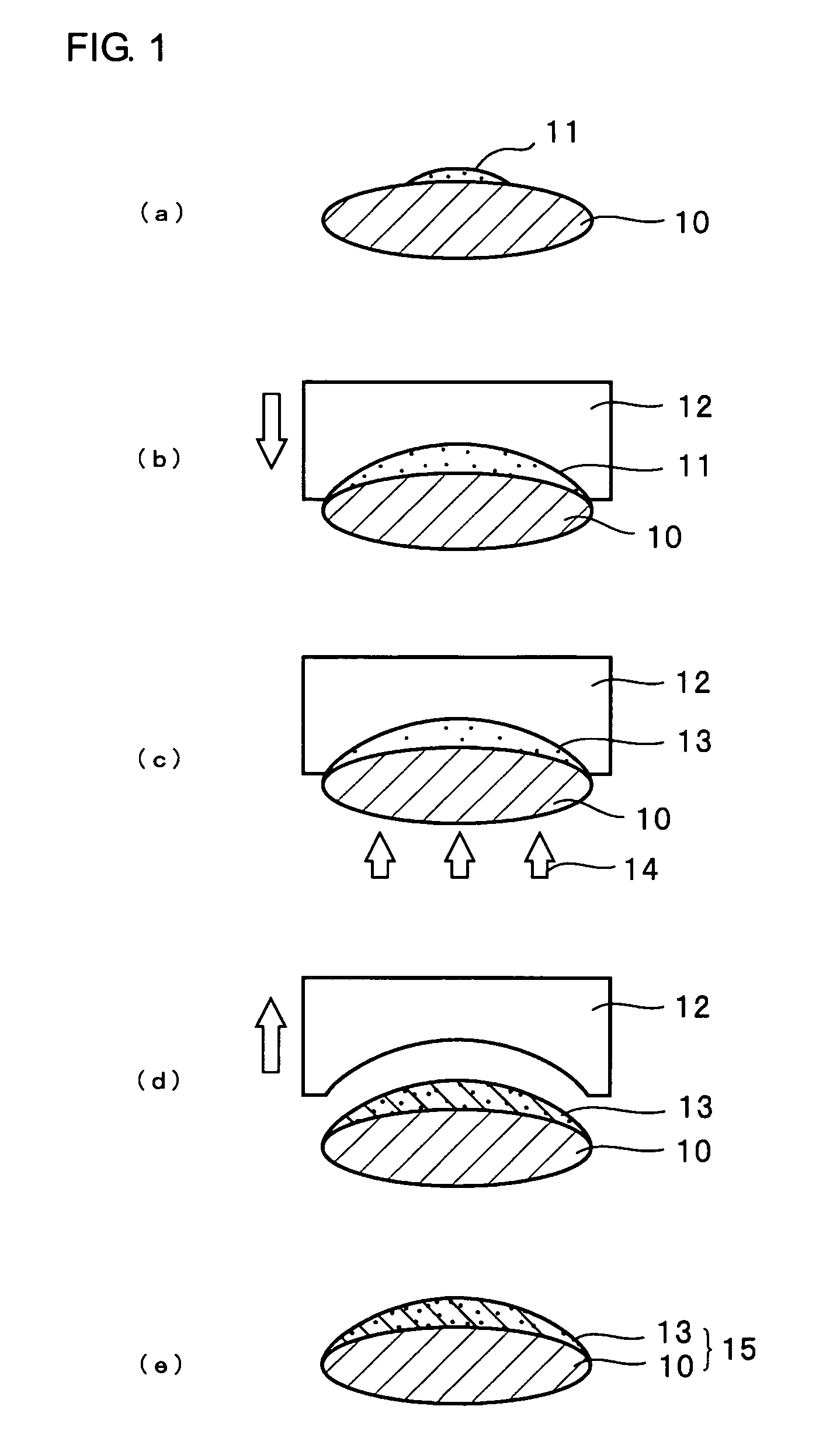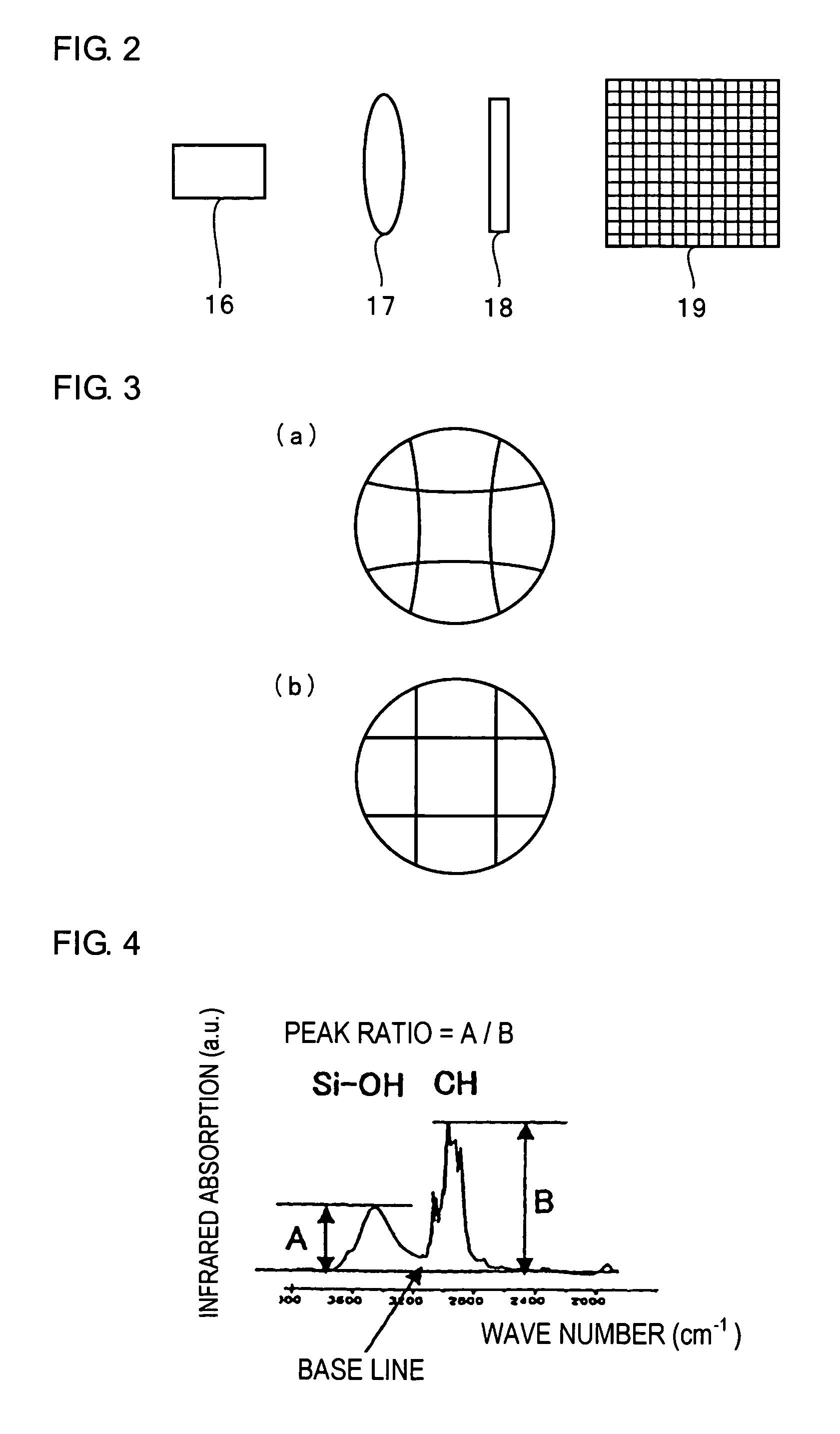Organometallic polymer material
a polymer material and polymer technology, applied in the field oforganometallic polymer materials, can solve the problems of affecting the quality of organic materials, and affecting the quality of organic materials, and achieves the effects of good translucency, high hardness, and high reliability
- Summary
- Abstract
- Description
- Claims
- Application Information
AI Technical Summary
Benefits of technology
Problems solved by technology
Method used
Image
Examples
examples 1 and 6-8
[0130]Organometallic polymer materials were synthesized according to the following process S.
[0131](Process S)
[0132](1)
[0133]Organometallic compound A shown in Table 1: 10 ml
[0134]Organometallic compound B shown in Table 1: 4.1 ml
[0135]Aqueous solution containing hydrochloric acid (2N conc. chloric acid: 1.65 ml) as a reaction catalyst
[0136]Ethanol: 20.5 ml
[0137]The ingredients specified above were mixed and left to stand for 24 hours so that the organometallic compounds A and Bunderwent hydrolysis and polycondensation.
[0138](2)
[0139]4 ml of the resulting polycondensate liquid was taken in a laboratory dish. 10 mg of 1-hydroxy-cyclohexyl-phenyl-ketone as a polymerization initiator was dissolved. The resultant was heated at 100° C. to remove ethanol by evaporation. As a result, about 1 g of a viscous liquid A was obtained.
[0140]Viscous liquid A: 1 g
[0141]Metal alkoxide X shown in Table 1: 3 ml
[0142]Organic acid Y shown in Table 1: 0.8 ml
[0143]The ingredients specified above were mixe...
example 2
[0157]The procedure of Example 1 was repeated, with the exception that 3-methacryloxypropyltrimethoxysilane was used as the organometallic compound A and pentaethoxyniobium was used as the organometallic compound B.
example 3
[0158]The procedure of Example 1 was repeated, with the exception that 3-methacryloxypropyltrimethoxysilane was used as the organometallic compound A and zirconium isopropoxide was used as the organometallic compound B.
PUM
| Property | Measurement | Unit |
|---|---|---|
| particle size | aaaaa | aaaaa |
| wavelength band | aaaaa | aaaaa |
| humidity | aaaaa | aaaaa |
Abstract
Description
Claims
Application Information
 Login to View More
Login to View More - R&D
- Intellectual Property
- Life Sciences
- Materials
- Tech Scout
- Unparalleled Data Quality
- Higher Quality Content
- 60% Fewer Hallucinations
Browse by: Latest US Patents, China's latest patents, Technical Efficacy Thesaurus, Application Domain, Technology Topic, Popular Technical Reports.
© 2025 PatSnap. All rights reserved.Legal|Privacy policy|Modern Slavery Act Transparency Statement|Sitemap|About US| Contact US: help@patsnap.com



